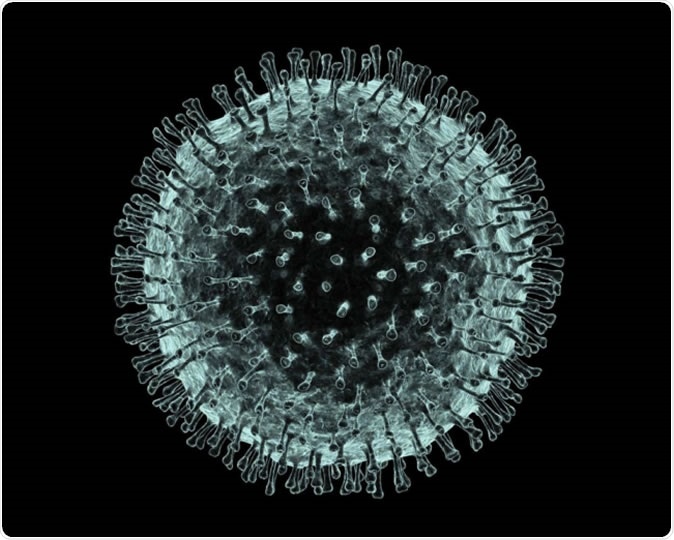Scientists at CSIRO, Australia’s national science body, and the Australian Animal Health Laboratory (AAHL) in Geelong, Victoria, have commenced preclinical trials for two novel coronavirus vaccine candidates.
These preclinical trials are essentially experiments that may prove the usefulness of these vaccine candidates in preventing the dreaded COVID-19 disease that’s caused by SARS-CoV-2 virus infection. If successful, one or both of these vaccine molecules would then be tested in human clinical trials before they are available for widespread use in humans.

Computer artwork of the new coronavirus, named after its distinctive ‘crown’ of surface proteins. Science Photo Library: PASIEKA
What is being done?
The development of a vaccine candidate typically takes around a decade before moving to preclinical trials in humans. However, with the current pandemic situation affecting most parts of the world, the race to develop a safe and effective vaccine is proceeding at breakneck speed.
These two new vaccines are being developed in collaboration with the Coalition for Epidemic Preparedness Innovations (CEPI). Using the accelerated approvals and fast-tracked research, the team of researchers hopes to have the vaccine within a year to year and a half.
Researchers at the CSIRO began work on these vaccines at the request of CEPI in January this year. Since then, two candidates most likely to succeed have been chosen. One of the molecules is from the University of Oxford in the United Kingdom, and the other is from Inovio Pharmaceuticals in the United States.
The vaccines will start preclinical trials wherein they will be injected into animal hosts. At the end of four weeks after the dose, the immune system of the vaccines would be tested to see if the animals develop immune blockers or antibodies that can fight off the virus and prevent the infection successfully. The animals at the end of four weeks would be exposed to COVID-19 to see if they are effective.
These preclinical trials would also provide a clear idea regarding the dosing of the vaccines as well as the route of administration best suitable for the vaccines, for when they would be tried on humans in phase 1 trials. There are speculations that these vaccines will come in the form of nasal sprays in humans.
For their studies, the team is using stocks of strains of the virus called the VIC01 strain isolated by The Doherty Institute.
Professor Trevor Drew OBE, Director of AAHL, leading this work, said, “We have been studying SARS CoV-2 since January and getting ready to test the first vaccine candidates as soon as they are available. We are carefully balancing operating at speed with the critical need for safety in response to this global public health emergency.”
The virus and its structure
Researchers at CSIRO have determined the genome of the RNA containing the SARS-CoV-2 virus. They have noted that the genetic code of the virus is changing in three different clusters of the gene. The researchers at present are also trying to figure out how these changes could affect the development of the vaccine against COVID-19.
CSIRO in its previous work, has successfully created the first animal or biological model to study the SARS-CoV-2. This was established in February 2020. From here, the researchers can predict the course of the infection in animals. This earlier work will help in the development of not only effective vaccines but also therapy to fight COVID-19.
.jpg)
Novel Coronavirus SARS-CoV-2 Colorized scanning electron micrograph of an apoptotic cell (blue) infected with SARS-COV-2 virus particles (red), isolated from a patient sample. Image captured at the NIAID Integrated Research Facility (IRF) in Fort Detrick, Maryland. Credit: NIAID
Way forward
Once the preclinical trials are successful, one or both of the candidate vaccines would be needed to be produced in large amounts for clinical trials. For this, CSIRO is collaborating with Victorian manufacturers and the Australian government for the mass production of the raw materials needed for the vaccine production.
Expert speak
CSIRO Chief Executive, Dr. Larry Marshall, said, “Beginning vaccine candidate testing at CSIRO is a critical milestone in the fight against COVID-19, made possible by collaboration both within Australia and across the globe. CSIRO researchers are working around-the-clock to combat this disease which is affecting so many – whether it’s at the Australian Animal Health Laboratory (AAHL) or at our state-of-the-art biologics manufacturing facility – we will keep working until this viral enemy is defeated.”
Dr. Marshall added, “Tackling disease and supporting better health outcomes takes a one-health approach. In 2016 CSIRO created the Health and Biosecurity research group who work with our scientists at AAHL to tackle our national and international health and biosecurity challenges together, so we can better protect the health of our people, environment, agriculture and industries and our way of life.” He said, “This, combined with our data science and manufacturing capability in our biological production facility, means we were well prepared to help Australia in One Health with disease identification, prevention, and management, to deliver the real-world solutions that our nation expects from science.”